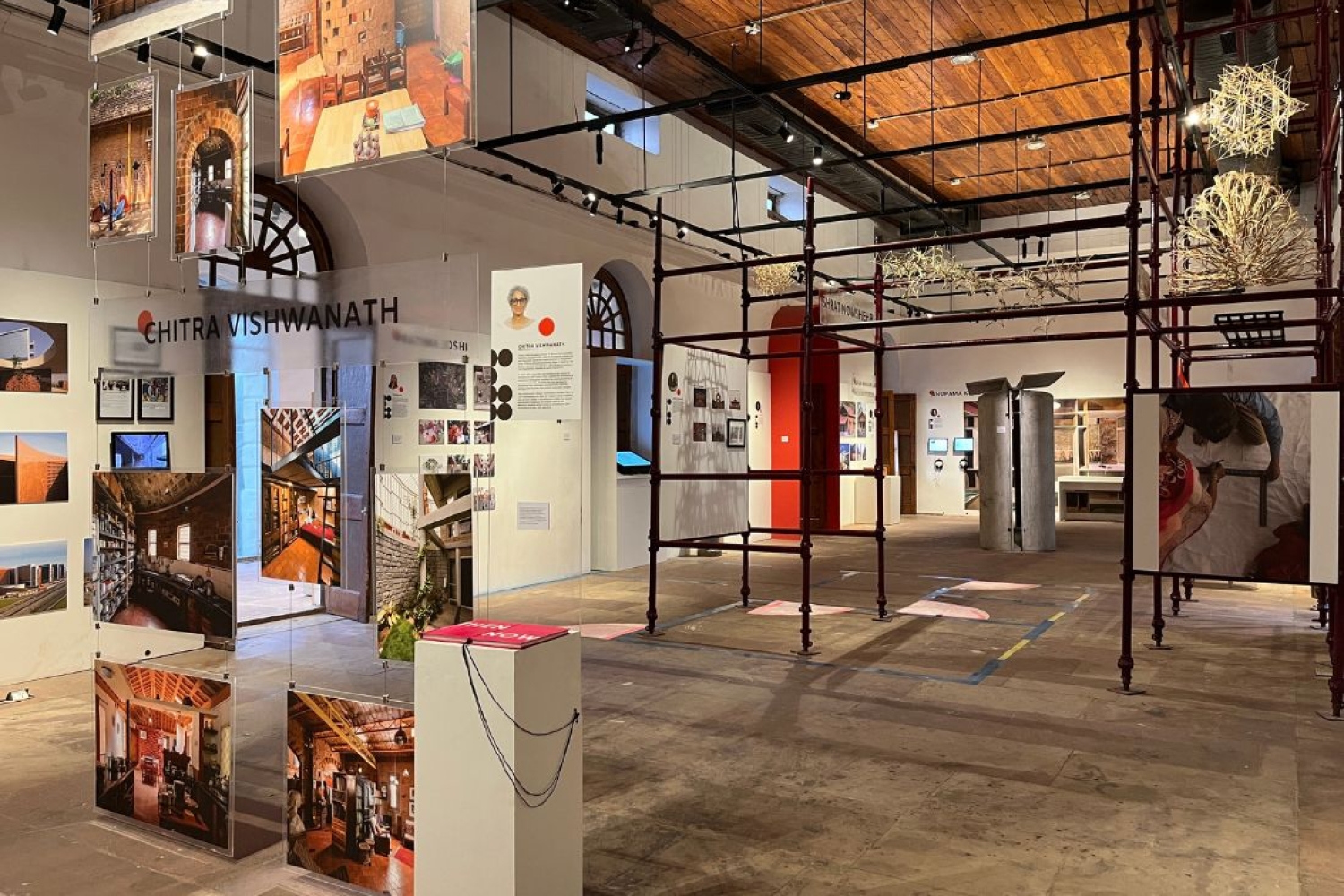

India’s first Art, Architecture and Design Biennale, organised by the Ministry of Culture at Delhi’s Red Fort, addresses pertinent social concerns in the country as part of its seven themes. One of these is Women in Architecture and Design. ‘Samatva: Shaping the Built,’ an exhibition curated by Swati Janu, artist, architect, writer and the founder of the Social Design Collaborative, recognises those whose work has been overlooked or understated as part of the Biennale’s seventh theme.
‘Samatva’ (Sanskrit: समतà¥à¤µ) stands for ‘equity,’ which is the focal point of ‘Samatva – Shaping, the Built;’ it heralds the cause of establishing equality in the fields of design and architecture, through the lens of gender. While women across the world have been an integral part of shaping and building everything around us in diverse ways, their contributions have not always been appreciated. Samatva honours the works of 80 such women artists from India across generations and geographies.
We are in conversation with the curator, Swati Janu, to learn more about her curatorial process and dive deeper into the intersection of art and feminism.
What is the inspiration and story behind your curation, ‘Samatva: Shaping the Built?’
A question I ask many people when I'm discussing this topic is, how many streets in your city are named after women? And whenever I do, people are often stumped because after naming a few they are left with nothing to say. This exercise indicates that while women have undertaken sizeable projects and done significant work, it has not necessarily been recognised, a trend I have witnessed worldwide.
This is why at the Biennale, a focus on women architects and designers is paramount to create more spaces of visibility, more spaces for women in leadership, and more platforms to showcase their work. It is necessary to spark discourse in this direction so that women in the arts are honoured and well-respected. So that their work does not go unnoticed, as it did with Urmila Eulie Chawdhury- the woman who played an integral role in the architecture of the city of Chandigarh but was never recognised equally alongside Corbusier. This year is her 100th birth anniversary, which is why it was extremely important for us to honour heroes like her while celebrating other women creatives.
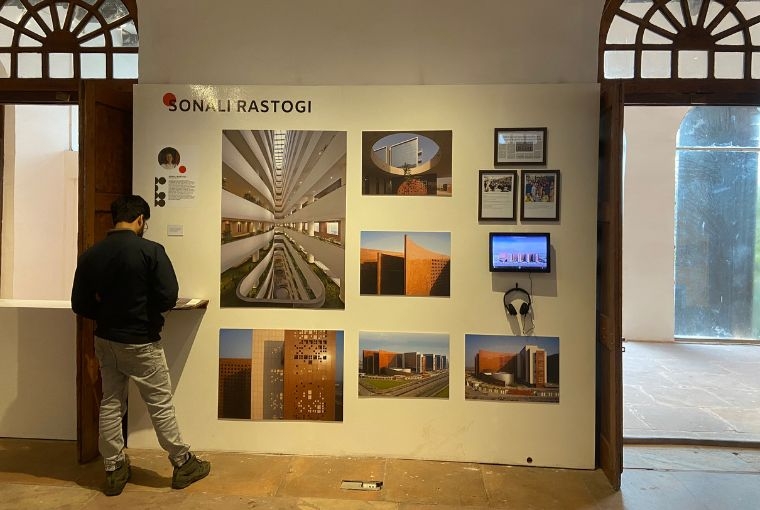
What message or narrative did you aim to convey through the collective works of these women?
Apart from showcasing brilliant work done by 80 architects from around the country, the primary narrative that we are trying to draw is critical discourse on how one can promote gender inclusion in the professions of design and architecture. That is to say, how do we ensure gender parity? How do we ascertain that an equal number of women, transgender and non-binary individuals are practising architecture, interior design and product design? We also hope to generate more equal representation on platforms of visibility and spaces of power and leadership.
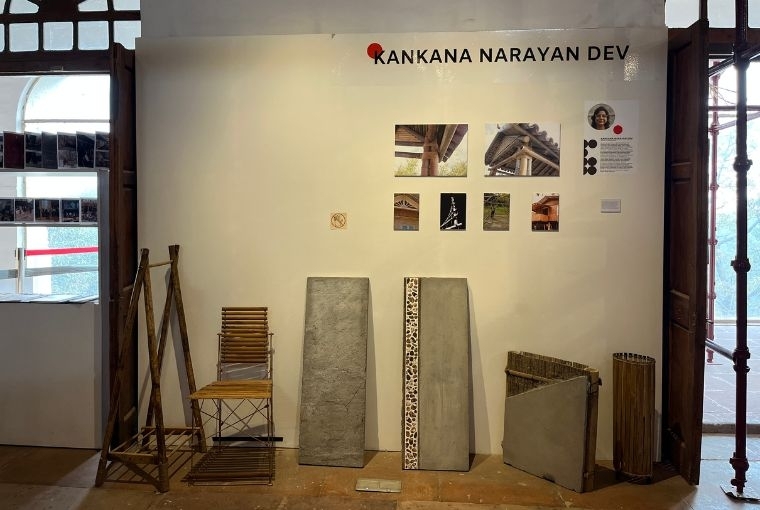
Were there any works done by the artists that particularly resonated with you during the curation process?
There have been quite a few that moved me. The work of Revati Kamath is quite spectacular, she was a brilliant architect. She passed away a few years ago and is especially known for her work in mud. We worked closely with her son, Ayodh Kamath, who is also an architect, to recreate a mud-plastered wall based on the design of an existing one in her office for which we invited the contractor who had worked with her for three decades. We are also displaying some installations of her own, taken from her house or studio, and also recreated a pin-up board of her projects inspired by the way she left her studio before she passed away. It was an extremely emotive experience and stayed with me.
Apart from this, I also really enjoyed working with Brinda Somaya and her daughter, Nandini Somaya. Instead of showcasing their architectural work, they have focused more on their personal journeys, which has made this project quite expansive. Their exhibit has a photo album which contains the story of the mother and the daughter duo: Brinda in the eighties when she started work as a young architect and was often the only woman on site and the only woman in boardrooms. And unsurprisingly, today, it is quite the same with her daughter. Therefore, while so much has changed in the profession, not much has at the same time. Such similarities and differences in how the profession of architecture has evolved over generations are what the exhibition brings out.
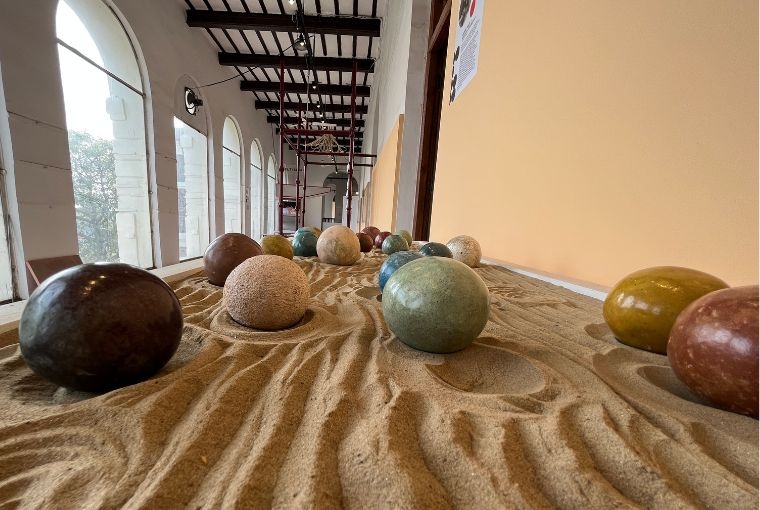
How do you envision the future representation of women in art and architecture, considering the impact of modern discourses such as this?
To be able to talk about what lies ahead, we first need to look back at what has happened so far. While we curated 'Samatva', it was important for us to recognise that we are not reinventing the wheel and acknowledge the work which has already been done. One part of this exhibition which was developed in collaboration with Madhavi Desai — the Timeline Room on the history of feminist efforts in architecture — does exactly this because to envision the future, it is necessary to understand all the collective efforts which have already taken place.
Moreover, in the last ten years, there has been a steady increase in discourse and events about the contribution of women architects. This national exhibition is another step towards that. However, doing something like this would probably not have been possible in the 70s or 80s. Therefore, such ways of raising awareness are working, regardless of how gradual this process may be. And then going ahead, if we have more women in power and leadership positions, we can do a lot to help other women. I’d also like to mention that men can play a critical role too, as allies!
That is what we aim to do here, through the medium of exhibition. The fact that feminism, gender discrimination, and inclusion are being talked about at a national level, is a win in itself. But I still believe there is a very long way to go.
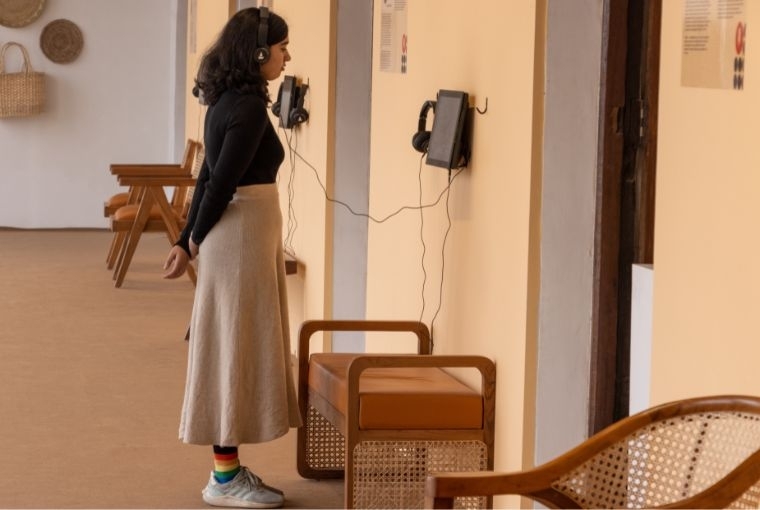
What do you think is the role of art in today’s time?
I think art can be a powerful medium for social change. Art can inspire us, and it can move us. Having worked in the social sector for a long time, I have seen that civil society can bring about a substantial positive impact. I have to admit that I have had doubts about art as a medium in the past; that is to say, what can art really do? And, art often aligns with privilege- one needs to have access to resources to be able to create and sell art. Not everyone can do it.
But I have come to realise that art can have a profound impact over time. In South Africa, when the population was fighting against Apartheid, the artists at that time played a huge role in bringing about change in their society. Even in our country, art has played a vital role in the protests in Shaheen Bagh. I think art is a medium for social change, but a gradual one at that. It's so intangible that one cannot always notice it immediately. But over a certain period, I think art has the power to change perspectives and even lives.
Words Muskan Kaur
Date 19.01.2024